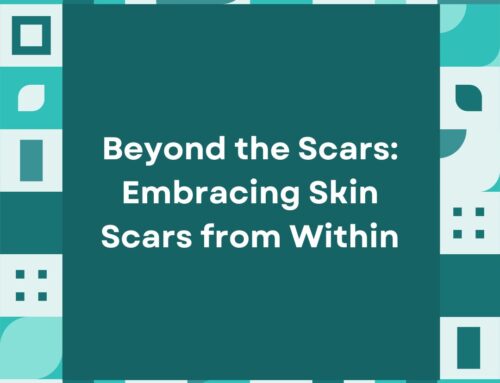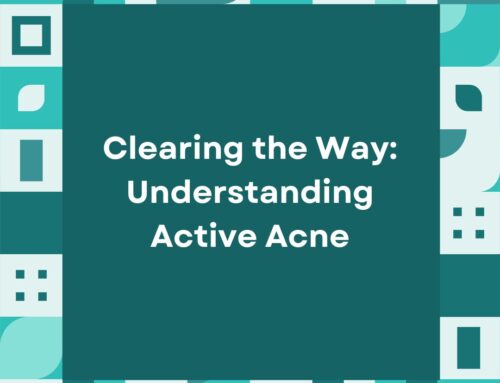Many people wonder if surgery is the only method that would work for their acne scarring. Perhaps you went to a medical spa where they did very mild chemical peels and lasers and saw no difference in your skin.
And you are probably right. A lot of treatments that are performed by estheticians are often not strong enough to provide the results you are looking for. But here is the real question: is surgery really right for you?
What are the different types of surgery for acne scarring?
The term “surgery” is sadly thrown around casually in the field of dermatology. In general, anything that requires a degree of cutting or tissue removal is considered a form of surgery. Below are brief examples of surgical approaches to acne scarring:
Subcision
Subcision is an increasingly popular acne scar treatment. In this approach, a dermatologist inserts a needle underneath your skin to manually break apart scar tissue. This method is particularly well-suited for rolling acne scars. This subtype of acne scarring is unique in that the scars are “tethered” or attached to the underlying fatty layer in the skin, which leads to the characteristic wavy appearance. Subcision solves this issue by using an instrument to manually sever the tethers to “release” the dipped scars to the surface of the healthy skin.
Punch Excision
Punch excision is actually a standard biopsy technique utilized by medical dermatologists. This treatment is performed by using a cookie-cutter-like blade to remove an entire column of skin tissue. As you can imagine, punch excision is usually a last ditch effort to remove scars in their entirety. Deep boxcar and ice pick scars, types of acne scars that are highly resistant to other treatments, can be completely excised with this method.
Dermabrasion
Dermabrasion, true to its name, involves a meticulous technique of “skin resurfacing” or “controlled skin exfoliation.” Dermatologists use wire brushes and sterile abrasive material to “sand down” your face. To illustrate, dermabrasion is analogous to the “buffing” step to washing your car: it is the final smoothening touch. Superficial acne scars are most responsive to this type of treatment.
Do I really need surgery for my acne scarring?
Many people are often scared of undergoing surgery for their skin. Downtime, recovery, and cost are certainly factors to consider when juggling your options.
Thankfully, there are a lot of non-surgical approaches that you can explore that can provide equal – if not, more – benefit to your scarring. Below are some examples that you can discuss with your dermatologist or plastic surgeon:
Chemical Reconstruction of Skin Scarring (CROSS)
CROSS is a special application method for chemical peels. Unlike standard application techniques that involve applying the peel across large skin surface areas, CROSS is performed by focally applying chemical agents to only the acne scars themselves while sparing the surrounding healthy skin.
So what’s the benefit of applying chemical peels exclusively on scar tissue? Well, CROSS was specifically invented for deep chemical peels, which would otherwise be dangerous if applied on large surface areas. For instance, full-face application of phenol can heighten one’s risk for cardiac arrhythmias – although this is already incredibly rare. Additionally, by limiting chemical peel application to your scars, downtime and recovery become much less time-consuming and demanding.
Fillers
Fillers are injectable volume-restoring agents that can significantly reduce signs of aging, including wrinkles, fine lines – and, of course, acne scarring. There are a variety of fillers that you can choose from (in increasing order of duration of effect): hyaluronic acid (HA; Juvederm, Restylane), calcium hydroxylapatite (CaHA, Radiesse) poly-l-lactic acid (PLLA, Sculptra), and polymethylmethacrylate (PMMA, Bellafill).
Typically, the longer-lasting or more permanent the filler, the more side effects it tends to have. However, in the absence of side effects, more permanent fillers do not require as many repeated maintenance treatments. Others prefer less permanent fillers, such as HA or PLLA, because the effects either fade away or are reversible.
Microneedling
Microneedling involves using a stamp or roller device to punch tiny holes in the skin. These micro-injuries trigger the skin’s natural healing process, inducing collagen and elastin production.
Microneedling is a very versatile treatment. It is often used to enhance the skin’s absorption of superficial chemical peel. However, while there are reports saying that microneedling improves acne scarring, especially with discoloration, its efficacy is much more limited when it comes to more severe acne scar types, such as boxcar and ice pick scars.
Laser Therapy
Lasers work by delivering very precise, concentrated bursts of energy directly into the skin, stimulating collagen production and remodeling to reduce the appearance of acne scarring. In many ways, lasers are similar to dermabrasion and microneedling: they exfoliate the top layer of skin and induce columnar micro-injuries in the skin.
Lasers come in different varieties based on their wavelength profile. For instance, erbium:YAG and CO2 lasers emit wavelengths of 2940 nm and 10,600, respectively, both of which heat water in the skin to cause controlled thermal damage in the skin. These types of lasers are effective for treating the irregular texture of acne scarring. For those looking to treat the redness of their scars, lasers, such as Nd:YAG (1064 nm), are more effective for targeting the blood vessels responsible for the redness.
There is a lot of debate about whether lasers are truly effective for acne scarring. The truth is that everyone will respond differently to this type of treatment. One thing to keep in mind is that many lasers can only penetrate a fraction of a mm or slightly more than 1 mm. Compare that to the thickness of the dermis where most scar tissue forms, which ranges from 1 to 4 mm deep.

Is combining treatments more effective for acne scarring?
Combining treatments can absolutely improve treatment outcomes by stimulating synergistic collagen synthesis and remodeling.
The real question is what and how do I combine treatments together to produce the best result. Generally, it is best to first understand what treatments have worked for you historically. For instance, if subcision has produced significant results for you in the past, then repeating that treatment would probably yield higher success rates.
Alternatively, perhaps your scars have lifted so much from subcision that the potential benefits essentially diminish, at which point more topical treatments, such as CROSS, lasers, or microneedling should be explored.
There is no secret recipe to what combinatory acne scar treatments are best. It is up to your skin and dermatologist to determine what is the next best course of action for improving your acne scarring.
Conclusion
There are a myriad of both surgical and non-surgical options for acne scar revision. For those who are too averse to surgery, that is totally understandable. Non-surgical options, including CROSS, fillers, microneedling, and lasers, are excellent treatment alternatives with minimal downtime and recovery. However, there may be situations in which surgical options cannot be avoided to produce the best results. Subcision, for instance, is known to be the best option for rolling acne scars.
Therefore, instead of dismissing surgical scar revision treatments outright, it’s wise to have a one-on-one discussion with your dermatologist at Scar Healing Institute to craft a personalized roadmap for your acne scar revision journey.
Schedule an Appointment
Scar Healing Institute
Scar Healing Institute is committed to developing the most effective treatments for scarring. Our team of scar revision specialists are continually inventing the latest technologies and formulas to deliver the best results for our patients.




